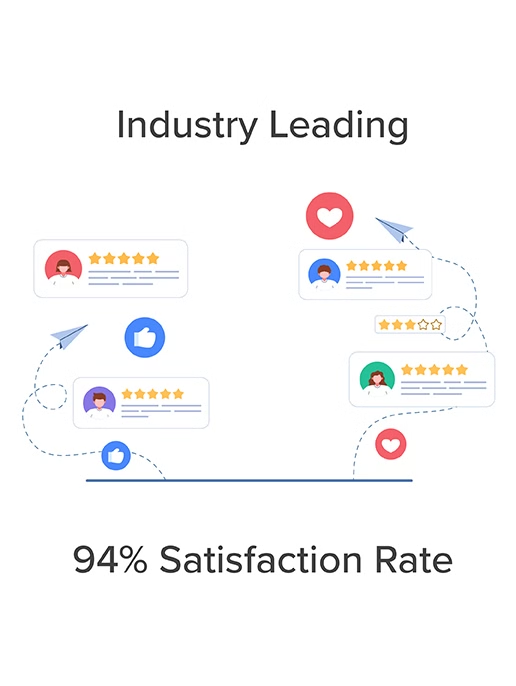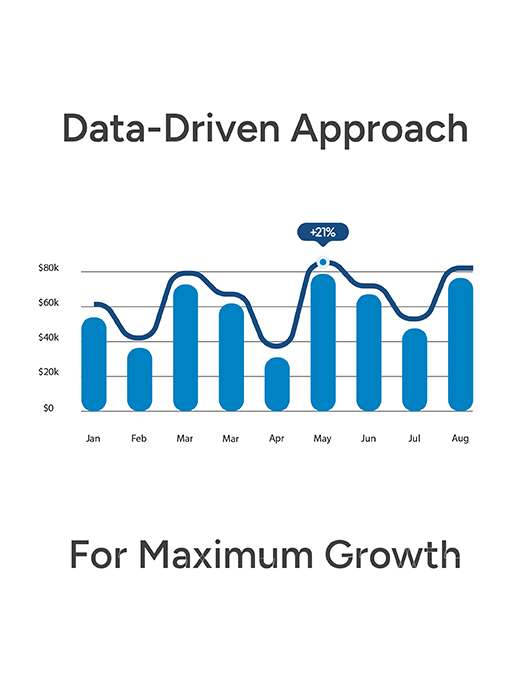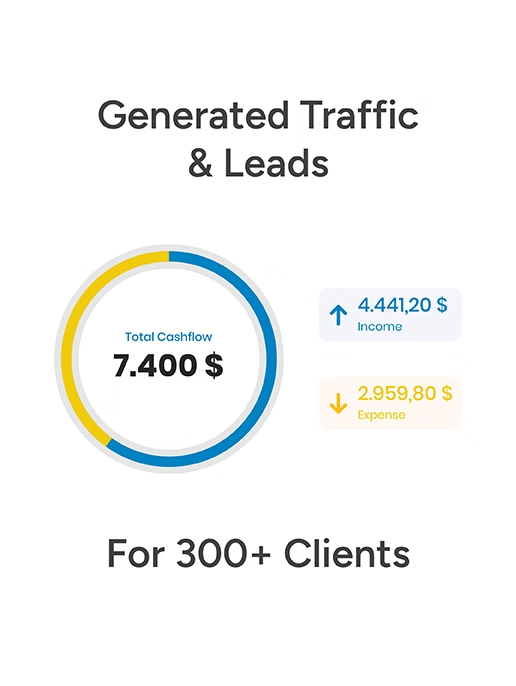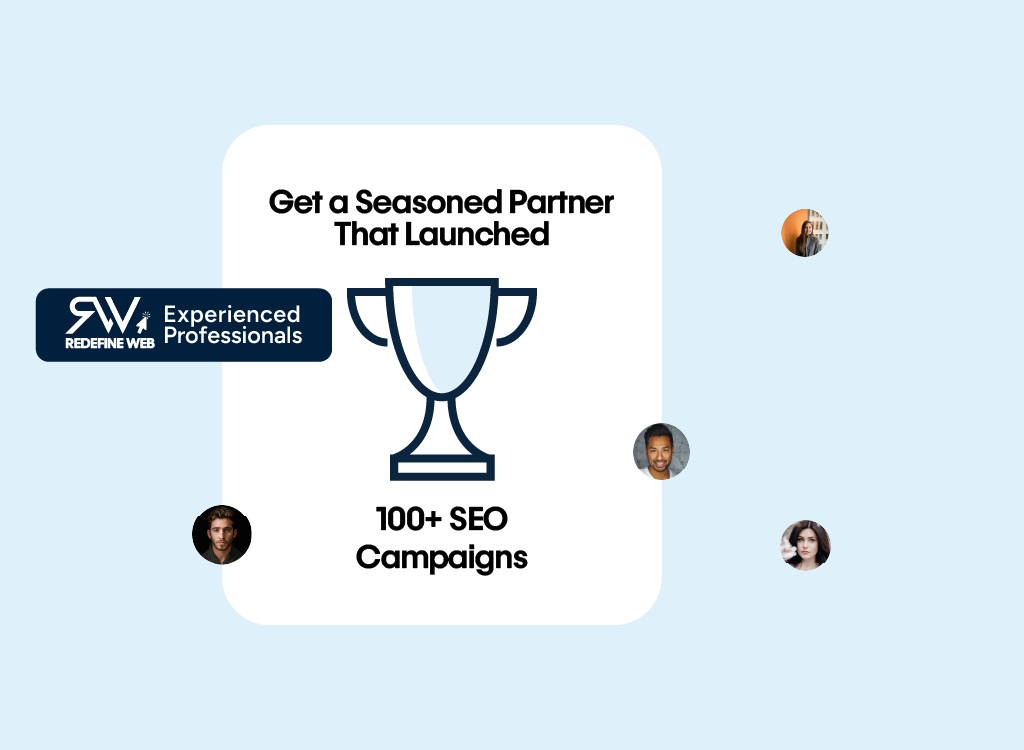


Get accurate results with our SEO services that positively affect your bottom line. From initial keyword research to ongoing optimization, we develop an SEO strategy that aligns with your objectives, enhancing your website for better search engine visibility and rankings.
We produce engaging content that meets your audience’s needs, positioning your brand as an industry leader. Our comprehensive SEO strategy includes strengthening the authority of your website and enhancing the user experience. Our results-oriented SEO services help you achieve sustained growth and a strong online presence.

Our SEO management services are designed to drive organic growth for sustained online success. We enhance your website’s structure, content, and user experience to boost your search engine visibility. We cover on-page and off-page SEO to create a solid foundation for your web presence.
We regularly monitor search engine algorithm changes. By keeping up with SEO trends, we help your site reach and maintain high search rankings. Our commitment to top-notch SEO management means you can attract and engage your audience, driving organic growth.
Our experienced SEO experts deliver customized strategies that enhance online visibility and attract organic traffic. We begin with a comprehensive website and industry analysis, pinpointing ways to improve your search rankings.
We monitor your site’s performance, adapting to search engine updates and market trends. Receive regular reports to track the progress of your SEO initiatives. Staying ahead of the latest SEO techniques helps your website reach and sustain high search rankings.
Expect a consistent uptick in organic traffic, leading to more leads, conversions, and growth for your business.

We often send out our newsletter with news and great offers. We will never disclose your data to third parties and you can unsubscribe from the newsletter at any time.
Unfortunately, we’re unable to offer free samples. As a retailer, we buy all magazines from their publishers at the regular trade price. However, you could contact the magazine’s publisher directly to ask if they can send you a free copy.
You can create a new account at the end of the order process or on the following page. You can view all of your orders and subscriptions in your customer account. You can also change your addresses and your password.
No, you don’t have to create an account. But there are a few advantages if you create an account.
You never have to enter your billing and shipping address again
Find all of your orders, subscriptions and addresses in your account
Download invoices of your orders
No, we don’t have a physical store location at the moment. We accept only orders through our online shop and we’re shipping all orders with the Swiss Post Service. Please visit our shipping section for more details.
From time to time you will find us at design fairs and popup markets in Switzerland. Subscribe to our newsletter and you’ll receive the latest news.
We examine various tactics designed to make a website more attractive to search engines. The goal is to get the website higher in search results when people search for related topics. We start by determining which words and phrases people use to search for our client’s services or products.
Once we have those keywords, we make sure they’re used in the right places on our clients’ websites. It’s not just about using the right words; it’s also about creating valuable, informative content that answers people’s questions and keeps them on the site longer.
We also dive into technical SEO, which is all about the behind-the-scenes aspects of a website that can impact its performance in search results. This includes ensuring the site loads quickly, works well on mobile devices and is easy for search engines to understand.
The final part of our approach is monitoring progress. We regularly examine the website’s rankings in search results, the amount of organic traffic it’s getting, the engagement of visitors, and whether they’re making purchases or signing up for newsletters.
For us, success in SEO means seeing actual results. We want to know if the website is climbing up the search rankings, if more people are coming to the site without paid advertising, if visitors are sticking around and interacting with the content, and if more actions contribute to the business’s goals. In short, we’re after long-term growth and a solid online presence for our clients.
On-page SEO is all about what you can do on your website to make it more search engine-friendly. This includes writing valuable content for your visitors and ensuring that content consists of the keywords you want to rank for. It also involves the technical side of things, like setting up meta tags that tell search engines what your pages are about and organizing your website’s structure so that it’s easy for search engines to navigate.
On the other hand, off-page SEO is about increasing your website’s authority through activities away from your site. When other reputable websites link to your site, it’s like a vote of confidence that tells search engines your site is credible and trustworthy. Social media marketing can also be part of off-page SEO, as it helps to spread the word about your content and can lead to more people linking to it.
To ensure we cover both bases, we create engaging, high-quality content that other sites will want to link to. We also contact other website owners to secure those all-important backlinks. By combining on-page and off-page SEO strategies, we aim to build a robust online presence that search engines can’t ignore.
We use reliable tools and proven strategies. We use SEMrush and Ahrefs to conduct thorough keyword analysis for your business. They offer a broader view of keyword performance across different search engines and help us uncover what competitors might be using.
Our approach includes looking at how many people are searching for a term (search volume), how difficult it might be to rank for that term (competition), and whether the term is relevant to what our client offers. We don’t just stop at the most obvious keywords. We dig into long-tail keywords – these are longer, more specific phrases that might have lower search volumes but can attract more qualified traffic. Understanding what potential customers are looking for (user intent) is critical to picking keywords to bring visitors to our clients’ websites.
When we optimize a website, we’re careful to use keywords that feel natural and enhance the user’s experience. This means placing keywords thoughtfully in the content itself and in meta tags, URLs, and image alt text, where they can also help with accessibility.
We don’t just insert keywords into your content and hope for the best. We use keyword mapping to ensure every page targets the correct terms. On-page optimization is a big part of our process. It aligns the website’s content with what your target audience is searching for. By doing this, we help improve the website’s visibility in search results and help it climb up the rankings. This way, when your audience searches for the products or services you offer, your website has a better chance of showing up where they can see it.
Absolutely! We focus on making your site quicker by shrinking images, using caching solutions, and simplifying the code. This can significantly cut down on load times. A fast-loading site is not only user-friendly but also favored by search engines.
For mobile users, we ensure your site looks great and functions well on all devices. This involves using responsive design, which automatically adjusts the layout of your website to fit the screen it’s being viewed on. Since more people are browsing on their phones, a mobile-friendly site is essential for good search engine rankings and keeping visitors happy.
Regarding local SEO, we tailor a strategy that boosts your visibility in the areas you serve. We start by optimizing your website with keywords that highlight your location. This helps people nearby find you when they’re searching for the services you offer.
We also set up and maintain listings on local directories and platforms like Google My Business. This step is critical for making your business appear in local searches and maps. We ensure your business’s name, address, and phone number (NAP) are consistent everywhere they appear online, which is crucial for search engines to trust the information about your business.
Moreover, we help you collect and manage customer reviews, which can significantly influence potential customers and improve your local search rankings. Lastly, we create content that resonates with your local audience, establishing your business as a community presence and enhancing your local search visibility.
For e-commerce websites that offer a wide range of products, it is crucial to ensure that each product page is finely tuned for search engines. This means incorporating well-researched keywords that potential customers will likely use when searching for your products. Each product description should be unique, avoiding the temptation to use the exact text across multiple pages, which can dilute your SEO efforts.
High-quality images are also a must. They engage users and can be optimized with appropriate alt text to boost SEO. A clean, logical structure for your website makes it easier for search engines to crawl and index your pages, which can improve your visibility in search results. This structure includes a well-thought-out organization of category pages, which should also be optimized with keywords and descriptive text.
Schema markup is another powerful tool. By implementing this code on your website, you can provide search engines with detailed product information that can be displayed directly in search results, potentially increasing click-through rates.
A website that’s easy to navigate is not just user-friendly—it’s also more likely to rank well in search engine results. Start with a clear, intuitive structure where pages are organized logically. Think of your website as a library where every book (web page) is easy to find because of a sound categorization system.
Menus should be straightforward, guiding visitors smoothly from one page to another. Breadcrumb navigation is helpful, showing users the path they’ve taken and making it easy to return to previous pages. Don’t forget to include a sitemap, which is like a directory of all the pages on your site, making it easier for search engines to crawl and index your website.
Make sure users can reach any page from the homepage with minimal clicks. This not only enhances user experience but can also help search engines understand which pages are essential. Internal linking is another strategy to boost SEO. By linking to other pages within your site, you can help distribute authority and guide visitors to more relevant content, keeping them engaged longer.
We provide content creation as a critical part of our SEO services. Our team includes talented writers who know how to write compelling content and SEO experts who understand how to optimize that content for search engines. Together, they create content that follows SEO best practices and offers real value to your audience. This approach helps to enhance your website’s relevance and boosts its authority, making it more likely to rank well in search results.
We depend on powerful tools like Google Analytics and Google Search Console to keep a close eye on how well our search engine optimization (SEO) efforts are doing. These tools allow us to see how much organic traffic is coming to your site, which indicates SEO success. We also look at the bounce rate, which tells us if visitors are finding what they expect on your site, and the conversion rate, which shows how many of these visitors are taking the actions you want them to, like making a purchase or signing up for a newsletter.
Another important thing we monitor is where your pages rank in search engine results for specific keywords. This helps us understand how visible your site is to potential visitors. We don’t just collect these numbers; we analyze them to see what’s working and what’s not. This data-driven approach helps us make intelligent changes to boost your site’s performance in search results.
The time to see results from our SEO strategies can vary depending on several factors. These include your industry’s competitiveness, your website’s current state, and your goals. Generally, it can take a few months to a year to see significant improvements in search engine rankings and organic traffic. SEO is a long-term investment, and consistent effort is critical to achieving and maintaining results.
With our copywriting addon, we ensure your website is fully optimized for SEO. As we build high-quality backlinks, produce valuable content, and refine on-page elements, your website’s authority and rankings will gradually increase, leading to more sustained and impactful results.
We take several steps to make your website stand out with featured and rich snippets. First, we ensure your content directly answers people’s questions, using a clear and straightforward style. We also use header tags to organize your content, making it easy for search engines to scan. Plus, we add structured data markup to your website’s code, which gives search engines detailed information about the content on your pages. This combination of tactics can help your site get noticed by search engines and improve your chances of appearing in these special search result features.
